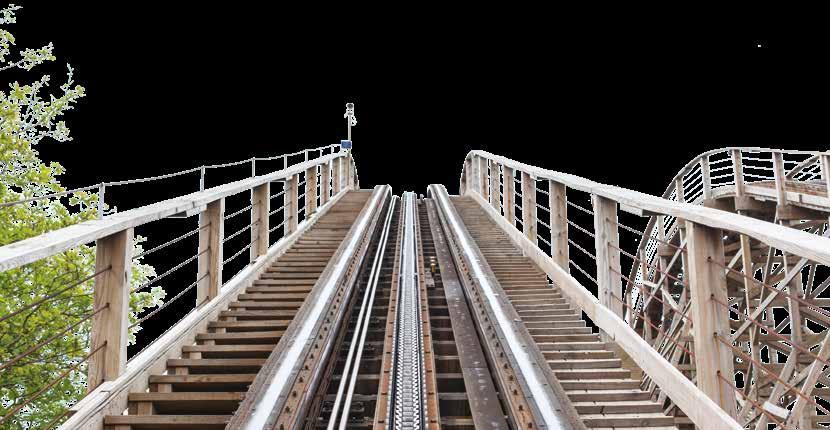3 minute read
Check It Out: A Real Roller Coaster Engineer
Next Article
a CoasterRol er engineer real



Donnelly Williams thinks of himself as a big kid — a big kid with a dream job. He gets paid to use his mechanical and electrical engineering degrees to test and build roller coasters.
When Donnelly was a kid, he loved taking things apart to see how they worked. He spent hours in his parents’ basement, his “laboratory,” tinkering, sketching and experimenting to build new things, such as a hexapod robot (pictured below).
In college, Donnelly studied mechanical engineering because he wanted to create special effects for movies. This enabled him to work as a mechanical engineer in many different industries. After ten years, he pivoted to working on roller coasters. “In terms of fundamental engineering, if you can design a machine, you can design a roller coaster.”
The biggest difference, of course, is safety. Donnelly’s main job is to keep riders safe. He uses finite element analysis — computer simulations that test the structures of coasters. “We figure out where it’s going to break and how it’s going to break, and then we figure out how to fix those things [before they ever break].” During the testing phase, Donnelly says, “we basically attempt to break the ride any way we can think of. We need to show that the ride can stop safely, no matter what we do.”
“A lot of roller coaster engineering comes down to thinking about: How are we going to take this apart? How are we going to maintain this? What are the pieces that are going to wear down first?” Designers have ideas about how they want things to look, but Donnelly says engineers are the ones who need to figure out how to make the designs a safe reality.
Roller coaster engineers also need to think about the amount of forces their riders experience while on the coaster. There are specific standards that limit the amount of g-force the rider can experience in a certain direction (see page 20). But g-forces are also what make rides fun and thrilling! Engineers balance the goal of creating cool rides with the need to eliminate risks.
With the engineering firm he works for, Donnelly has worked on lots of different types of rides, including The Incredible Hulk Coaster and Harry Potter and the Forbidden Journey, both at Universal’s Islands of Adventure.
The trains on roller coasters that use launchers or “lift hills” have no engine. “Gravity’s got you — gravity and friction, that is.” So engineers design block zones and brake zones. Once the train has been launched, it doesn’t stop until it hits the brake zone. The zones are designed with logic, so only one vehicle can occupy a block zone at any point in time. And before each block zone is a brake zone, so if one train gets stuck, the train behind it can be stopped.
Donnelly’s best advice to kids who want to design roller coasters someday:
“Build stuff. It doesn’t matter what it is. This will help you better understand how things go together and how things work spatially.”


Donnelly Williams is a professional engineer in British Columbia, Canada, with degrees in mechanical and electrical engineering.
Humans are about 80% water, so in the final testing phase, engineers load the ride with dummies filled with water. “These give you the dynamic movement that a person would have sloshing around on the ride.”
When he was a teenager, Donnelly wanted to make special effects for movies, so he set out to make a robot insect. From left to right: An early sketch of a remote-controlled spider; Donnelly’s first attempt at a robot spider; the next iteration, which used motors as legs; Donnelly’s final design: a programmable hexapod that could avoid walking into walls.
Hogwarts Castle at Universal’s Islands of Adventure, which houses Harry Potter and the Forbidden Journey, a ride Donnelly helped design.









